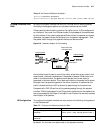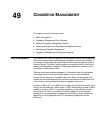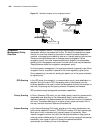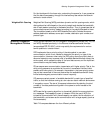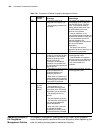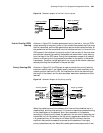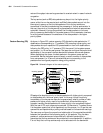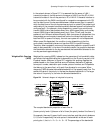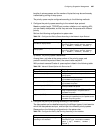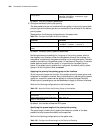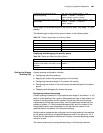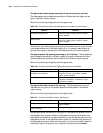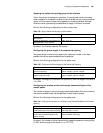
684 CHAPTER 49: CONGESTION MANAGEMENT
rate and throughput rate can be guaranteed to a certain extent in case of network
congestion.
The key service (such as ERP) data packets may be put into the higher priority
queue, while the non-key service (such as E-Mail) data packets are put into the
lower priority queue, so that the data packets of the non-key service are
transmitted in the idle intervals during the processing of the key service data. In
this way, the priority of the key service is guaranteed and network resources are
optimized. However, it brings the problem that the data packets in the lower
priority queue may be blocked in the packet queue of the transmission interface
for a long period because of the existence of the data packets in the higher
priority queue.
Custom Queuing (CQ) As shown in Figure 220, custom queuing (CQ) divides the data packets into 17
classifications (corresponding to 17 queues of CQ) according a given policy, and
data packets are input respective CQ queues based on their own classifications
following the FIFO policy. In 17 queues of CQ, the queue 0 is the system queue,
and queues 1 to 16 are the user queues. The users can configure the proportional
relationship of the occupied interface bandwidth between various user queues.
When dispatching the queue, the data packets in the system queue are first
transmitted. Before the system queue is empty, a certain number of data packets
from user queues 1 to 16 are not extracted and sent out according to the
predetermined configured proportion using polling method.
Figure 220 Schematic diagram of the custom queuing
PQ assigns the absolute priority to the data packets with higher priority compared
to data packets with the lower priority level. In this way, though the priority
transmission of the key service data can be guaranteed, when a number of data
packets with higher priority need to be transmitted, all bandwidths may be
occupied, causing the data packets with lower priority to be completely blocked.
With the use of CQ, such a case can be avoided. CQ has total of 7 queues. Queue
0 is the system queue that is first dispatched, and the queues 1 to 16 are the user
queues that are dispatched by a polling method based on the bandwidth settings.
The users may configure the proportional relationship of the occupied bandwidth
between the queues and the enqueuing policy of the packets. Thus, the data
packets of various services can be provided with different bandwidths, to
guarantee that the key services can be provided with more bandwidth. In addition,
it is not likely that non-key services may not be allocated with the bandwidth.
incomi ng packet s
queue1
queue2
cl assi f yi ng
out goi ng packet s
queue15
queue16
queuei ng
interface
¡-¡-
10%
30%
10%
5%




